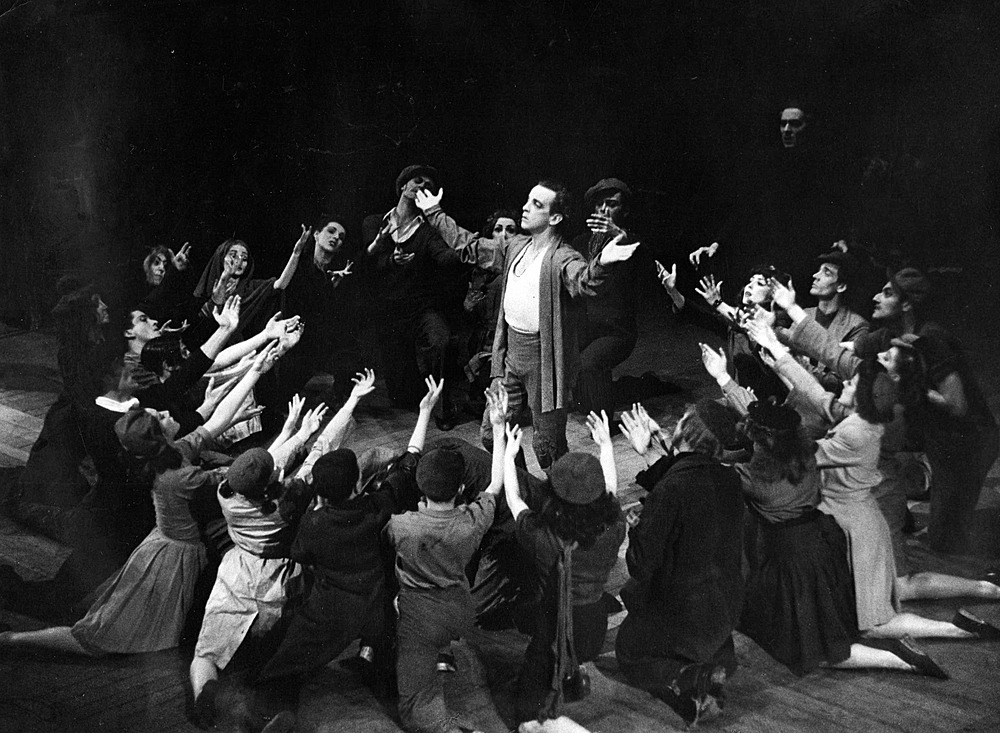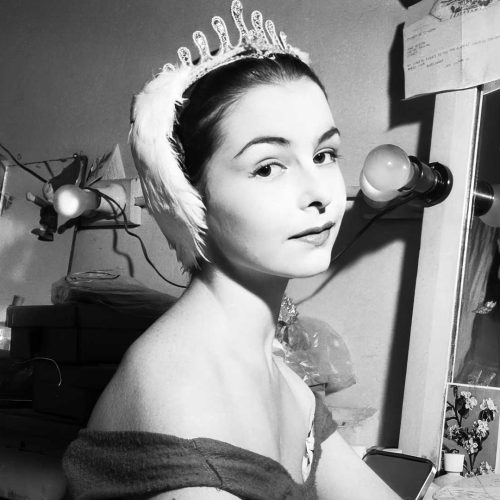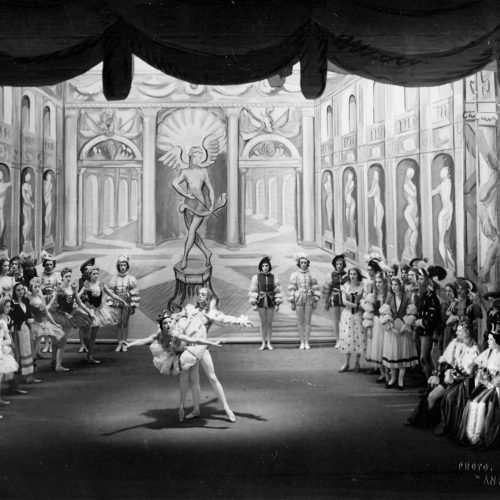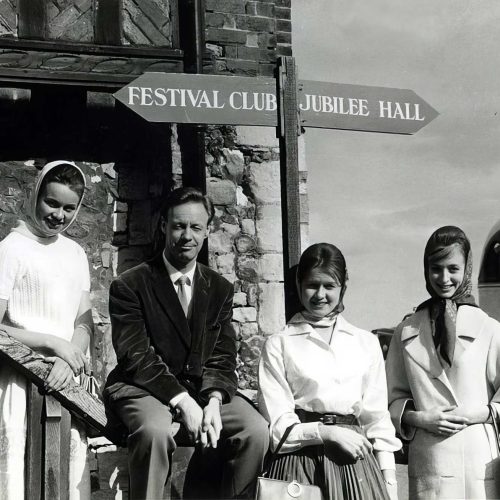Miracle in the Gorbals is a dramatic one-act ballet, choreographed in 1944 by Robert Helpmann to music by Arthur Bliss and designs by Edward Burra. It was first performed at Sadler’s Wells in October of that year. The scenario was based on an idea that came to Michael Benthall, when he was himself working in Glasgow in a gun factory. The Gorbals was a dockside Glasgow slum, notorious for its tenements, its pubs and its violence. The action centres round a prostitute who is confronted by a group of young men, and also by a minister of religion. A pair of lovers flit in and out of the scene, adding atmosphere rather than action. Another woman appears to have committed suicide, but a stranger enters and revives her. The minster is jealous of the stranger and arranges for him to visit the prostitute in her room, supposedly on a mission of mercy. The prostitute emerges from her room, apparently in a state of innocent happiness, but when the stranger re-appears he is beaten up and killed by a group of thugs who have been worked up by the minister. The minister is appalled by what he has provoked. A beggar, who has observed what has been going on, goes to the help of the stranger, along with the prostitute and the suicide. The two women depart, leaving the beggar and the stranger alone on the stage. In the original production Helpmann danced the part of the stranger, with Pauline Clayden as the suicide and Celia Franca as the prostitute. The ballet was presented every year from 1944 until 1950 and revived in 1958. It was re-constructed in 2014 for Birmingham Royal Ballet by David Drew, with direction by Gillian Lynne, an original cast member, along with Clayden, Julia Farron, Henry Danton and Jean Bedells.




